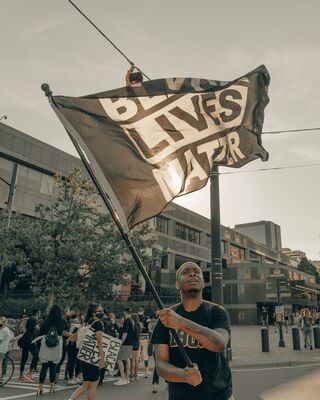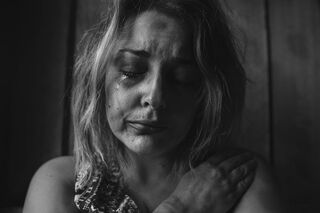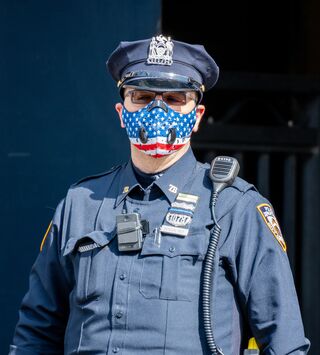Law and Crime
Why Did Violent Crime Surge in 2021?
Making sense of recent trends in U.S. crime rates.
Posted January 13, 2022 Reviewed by Devon Frye
Key points
- Contrary to popular belief, a lack of confidence in policing did not appear to contribute to the spike in violent crime rates.
- Nonviolent, less-serious crimes decreased during the pandemic—yet intimate partner violence, aggravated assaults, and homicide rose.
- Relaxed social distancing requirements implemented in 2021 may have contributed to a spike in homicide rates, research suggests.
- Society must be proactive rather than reactive in its approach to combatting rising violent crime rates.
Overall, crime in the United States is trending down. Yet the rates of certain violent crimes—namely intimate partner violence, aggravated assault, and homicide—have increased over the past few years. In 2021, the United States recorded the highest increase in homicide rates since 1995 (be mindful, though, that those rates are still lower than the homicide rates of the 1980s).

Pinpointing the specific reason for the increase in violent crime, namely homicides, remains mostly elusive to criminal justice academics and practitioners. This is because investigating and understanding increases and decreases in violent crime trends and patterns can be heavily influenced by so many variables—including but not limited to financial gain, gang rivalry, jealousy, anger, hatred, sadness, political rivalry, revenge, extremist ideologies, lust, being under the influence of drugs and/or alcohol, severe mental illness, religious extremism, social class conflict, and personal satisfaction.
Soaring Violent Crime Rates
The Council on Criminal Justice, a nonpartisan think tank in Washington, D.C., recently reported the following: “With the exception of robbery, which began rising in late March after a three-year downward trend, there was little change in violent crime rates early in the pandemic. But rates of homicide, aggravated assault, and gun assault began to increase significantly in late May.” From May to June 2020, homicides in 20 major U.S. cities increased by 37 percent, led by Chicago, Philadelphia, and Milwaukee.
Many news outlets have reported that the increase in violent crime over the past few years can, at least in part, be attributed to the public’s perceived lack of confidence in our nation’s police officers. But that theory was largely debunked by researchers Rosenfield and Wallman in a widely cited study, entitled "Did de‐policing cause the increase in homicide rates?"

It should also be noted that while still low, Black Americans’ confidence in policing, in particular, has increased since 2019, according to a July 2021 Gallup Poll. Yet the reason(s) for the increase are unclear. Black Americans’ confidence in policing, as an institution, has historically been lower than that of white Americans, which is not surprising. However, while Black Americans are far less likely than white Americans to have high confidence in the police, neither group reports particularly strong confidence in the criminal justice system (perhaps another persuasive argument in favor of criminal justice reform).
Thus, overall, there is no solid scientific evidence that dwindling confidence in the police has led to the increase in U.S. violent crime rates, though some anecdotal, unsubstantiated claims continue to proliferate in the media. However, many evidence-based studies have determined a causal relationship between the widespread COVID pandemic and the increase in specific violent crimes.
COVID’s Influence on Violent Crime
In March 2021, I published an article addressing the worldwide increase in incidents of intimate partner violence, particularly during the initial international lockdown. Since the outbreak, emerging data and reports have consistently shown that intimate partner violence, aggravated assaults, and homicides have risen.
This outcome has been dubbed the “shadow pandemic” because many victims have literally been trapped in their homes with their abusers, with limited to no physical access to the outside world. Due to restricted physical movement during lockdowns, it became much easier for friends, family members, coworkers, teachers, professors, and medical professionals to miss the telltale signs that something is wrong.

Bowman and Gallupe noted that the decline in crime, particularly minor crimes, is likely in response to the mass lockdowns and stay-at-home orders issued by state governments throughout the U.S. Since approximately 50 percent of those crimes are committed by young offenders, who tend to engage in crime as a group rather than as individual offenders. Therefore, the overall reduction in crime is likely the direct outcome of the stay-at-home orders.
When it comes to adult offenders, job loss, illness, death, isolation, financial insecurity, fear, partisan conflict, the proliferation of dangerous conspiracy theories, extremist ideologies, and future economic or political instability and uncertainty stemming from the pandemic have pushed some to the brink. Some unemployed workers may have engaged in crime out of desperation. And many people are simply emotionally unwell: The American Psychological Association reported that there has been a widespread escalation in cases of depression and anxiety four times higher than that recorded in 2019.

A June 2020 study by Abt, Rosenfeld, and Lopez concluded that homicide rates may rise for a number of reasons, which they did. Homicide rates fluctuate seasonally with higher rates in the warmer months, and with the relaxed social distancing measures in place throughout 2021, normal activity patterns resumed, thereby creating additional opportunities for crime, including crimes of violence. Furthermore, public resources—including but not limited to the police and hospitals—have been significantly strained, both of which play a critical role in responding to violent crime.
Routine Activities Theory
Relaxed social distancing restrictions potentially leading to more crimes of violence is an unfortunate outcome. In criminology, we can explain this increase in violent crime by applying what's known as routine activities theory (RAT).

Routine activities theory was initially introduced by researchers Cohen and Felson. The theory states that the likelihood of criminal victimization depends on three essential requisites: a motivated offender, a suitable victim, and the absence of capable guardians. Some individuals, particularly those residing in crime-ridden areas, are therefore at a higher risk for victimization, particularly when there is no guardian present (i.e., the police). Therefore, victimization can be understood in terms of the normal everyday activities and routines of potential victims that either intensify or inhibit the likelihood of being victimized.




